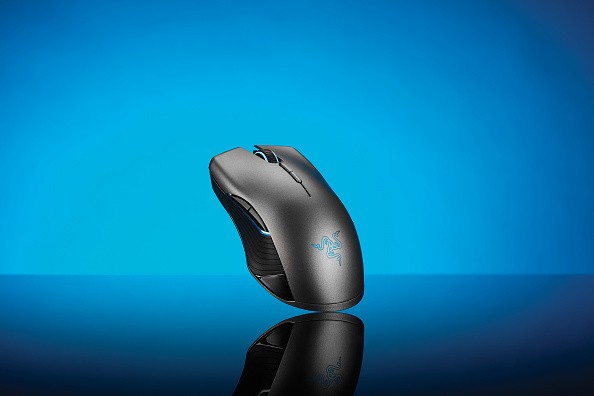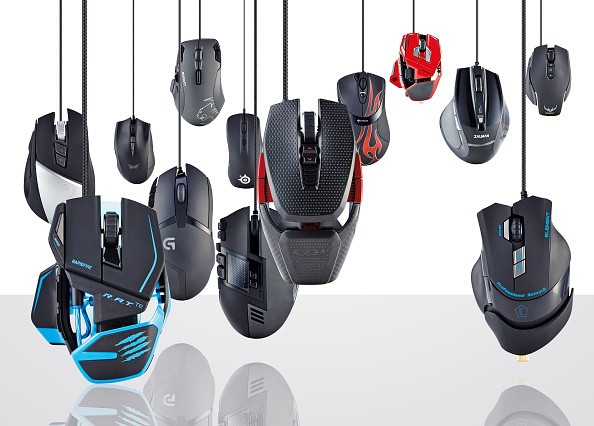Gaming mouse makers often tout the technical capabilities of their products, but not a lot of people actually understand what any of those specifications mean. As such, it often leads to confusion, with people spending too much on features that they don't really need.

If you're in the market for a new gaming mouse, it would help a lot if you have any idea what those specs on the box and marketing flyers mean. And you're in the right place to learn.
As per BinaryTides, there are numerous things you have to look for when learning how to buy a gaming mouse. The original list has ten individual characteristics, but for the sake of brevity, we'll be focusing on those that matter most.
Wired Vs Wireless Gaming Mouse
First off, one of the most important choices you must make is this: should you go for a wired or wireless model?
A lot of serious, truly "hardcore" PC gamers, specifically those who play high-stakes, competitive eSports, would tend to choose wired gaming mice. The reason is that with a wired connection, the latency is at its absolute minimum.

In fast-paced eSports games, even milliseconds' worth of delay from mouse input to screen action can be the difference between winning and losing.
On the other hand, wireless gaming mice are not at all inferior. While there might be any latency increase, it is often imperceptible and doesn't matter much in real world play. Often, the best wireless gaming mouse you can find can often go toe-to-toe with the best wired models in the market, as per DotESports.
At the end of the day, it all comes down to preference. Both wired and wireless mice are excellent options in their own right. Would you like the "freeing" feeling of going wireless, or would you go with the solid reliability of the wired mouse? You choose.
Playstyle Affects Mouse Design
Consider your very own playstyle when using a mouse. How do you grip it?
There are three common types of grip: claw, palm, or fingertip. And each specific grip type will often tell you the best gaming mouse to buy. How these grip types affect your gaming mice choices are explained in this YouTube video:
But for a simplified explanation, PC Build Advisor puts it as follows:
Claw grip gamers would benefit from a solidly built, heavier gaming mouse built for rapid clicking and gliding motions. This often applies to Real-Time Strategy (RTS) gamers, where winning often comes down to how fast you can click.
Palm grip gamers would fare better with a mouse designed for accurate gliding control. Gaming mice designed for precise gliding and movement are perfect for snipers in first-person shooters, such as "Call of Duty."
Fingertip grip gamers benefit a lot from light mice built for very quick movements and flick shots, making them perfect for FPS and RTS gamers.
For your next gaming mouse purchase, consider your playstyle first because this is often put on the marketing materials for the mouse themselves. Are you a claw, palm, or grip gamer?
Sensor Type
There are two types of sensors used for gaming mice: laser and optical.

According to GamingScan, you need to go for a mouse with a laser sensor as much as possible. That's because laser mice are just very accurate because of the laser sensors.
Furthermore, a laser gaming mouse will be usable on almost any surface without losing any accuracy. It won't matter if you have an actual mousepad: you can use it anytime, anywhere.
However, the one drawback with this kind of mouse is price. Optical mice often tend to be cheaper, so budget could play a factor in all of this.
DPI/CPI
DPI means Dots Per Inch, while CPI stands for Counts Per Inch. Both these terms measure the overall sensitivity of a computer mouse. In other words, a higher DPI or CPI means the mouse is extremely sensitive.

Often, gaming mice come with adjustable DPI/CPI settings that you can tweak via a button. This allows you to adjust your mouse sensitivity on the fly, even during a game, whenever you need to.
Polling Rate
Polling rate refers to the number of times the mouse "reports" its position to the computer. Often, a high polling rate means your PC will translate the mouse's movement more accurately.
Polling rates are measured in hertz (Hz), with 1000 Hz being the typical highest, and 125 Hz often the lowest.
Going for a high polling rate doesn't always mean it's good, however. If your PC is not that powerful, a gaming mouse with high polling rate might cause game-breaking lag because it's too intensive on the CPU.
But if your PC is powerful enough, then by all means go for it.
Maximum Tracking Speed (Perfect Control Speed)
Measured in IPS, maximum tracking speed refers to how fast you can move the mouse while maintaining accurate motion tracking. A common high tracking speed is 650 IPS, while 150 IPS is considered low.
This often links back to your DPI setting, and often depends on personal preference.
Related Article : How To Buy the Best Controller for PC Gaming 2021
This article is owned by Tech Times
Written by RJ Pierce
![Apple Watch Series 10 [GPS 42mm]](https://d.techtimes.com/en/full/453899/apple-watch-series-10-gps-42mm.jpg?w=184&h=103&f=9fb3c2ea2db928c663d1d2eadbcb3e52)



